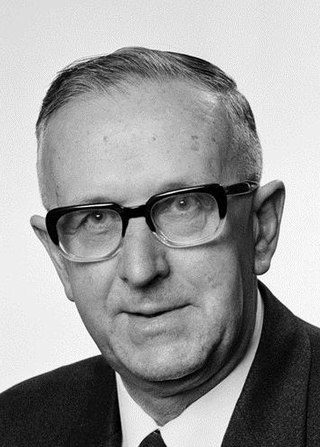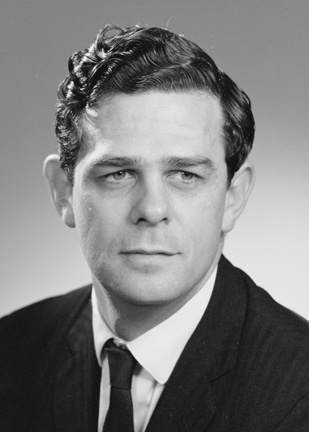Related Research Articles

Edward Gough Whitlam was the 21st prime minister of Australia, serving from 1972 to 1975. He held office as the leader of the Australian Labor Party (ALP), of which he was the longest-serving. He was notable for being the head of a reformist and socially progressive administration that ended with his removal as prime minister after controversially being dismissed by the governor-general of Australia, Sir John Kerr, at the climax of the 1975 constitutional crisis. Whitlam is the only Australian prime minister to have been removed from office by the governor-general.

The Liberal Party of Australia is a centre-right political party in Australia. The party is one of the two major parties in Australian politics, the other being the Australian Labor Party. The Liberal Party was founded in 1944 as the successor to the United Australia Party. Historically the most successful political party in Australia's history, the party is now in opposition at a federal level and does not hold government in any Australian state or territory with the exception of the island state of Tasmania.

Sir John Grey Gorton was an Australian politician, farmer and airman who served as the 19th prime minister of Australia from 1968 to 1971. He held office as the leader of the Liberal Party of Australia, having previously been a senator for Victoria. He was the first and only member of the upper house of the Parliament of Australia to assume the office of prime minister.

Sir William McMahon was an Australian politician who served as the 20th prime minister of Australia from 1971 to 1972. He held office as the leader of the Liberal Party of Australia. He was a government minister for over 21 years, the longest continuous service in Australian history.

The Democratic Labor Party (DLP) was an Australian political party. The party came into existence following the 1955 ALP split as the Australian Labor Party (Anti-Communist), and was renamed the Democratic Labor Party in 1957. In 1962, the Queensland Labor Party, a breakaway party of the Queensland branch of the Australian Labor Party, became the Queensland branch of the DLP.

Sir Paul Meernaa Caedwalla Hasluck, was an Australian statesman who served as the 17th Governor-General of Australia, in office from 1969 to 1974. Prior to that, he was a Liberal Party politician, holding ministerial office continuously from 1951 to 1969.

The Division of Hasluck is an electoral division of the Australian House of Representatives, located in Western Australia.
This is a list of members of the Australian House of Representatives from 1966 to 1969, as elected at the 1966 federal election.

Francis Patrick Vincent McManus, Australian politician, was the last leader of the parliamentary Democratic Labor Party and a prominent figure in Australian politics for 30 years.

The 1963 Australian federal election was held in Australia on 30 November 1963. All 122 seats in the House of Representatives were up for election. The incumbent Liberal–Country coalition government, led by Prime Minister Sir Robert Menzies, won an increased majority over the opposition Labor Party, led by Arthur Calwell. This was the only time that a Federal Government won a seventh consecutive term in office.

The 1974 Australian federal election was held in Australia on 18 May 1974. All 127 seats in the House of Representatives and all 60 seats in the Senate were up for election, due to a double dissolution. The incumbent Labor Party led by Prime Minister Gough Whitlam defeated the opposition Liberal–Country coalition led by Billy Snedden. This marked the first time that a Labor leader won two consecutive elections.

The 1972 Australian federal election was held in Australia on 2 December 1972. All 125 seats in the House of Representatives were up for election, as well as a single Senate seat in Queensland. The incumbent Liberal–Country coalition government, led by Prime Minister William McMahon, was defeated by the opposition Labor Party led by Gough Whitlam. Labor's victory ended 23 years of successive Coalition governments that began in 1949 and started the three-year Whitlam Labor Government.

The 1969 Australian federal election was held in Australia on 25 October 1969. The incumbent Liberal–Country coalition government, led by Prime Minister John Gorton, won the election with a severely diminished majority over the opposition Labor Party, led by Gough Whitlam despite losing the two party popular vote. Both major parties had changed their leaders in the run-up to the election, the first time this had occurred since 1946. The victory was the ninth consecutive general election won by the Coalition, and remains the record number of consecutive terms won by any Australian Federal Government.

The 1961 Australian federal election was held in Australia on 9 December 1961. All 122 seats in the House of Representatives and 31 of the 60 seats in the Senate were up for election. The incumbent Liberal–Country coalition led by Prime Minister Robert Menzies defeated the opposition Labor Party under Arthur Calwell, despite losing the two-party-preferred popular vote. In his first election as Labor leader, Calwell significantly reduced the Coalition's margin, gaining 15 seats to leave the government with only a two-seat majority. This was the first and only time that a Federal Government won a sixth consecutive term in office.

Sir Ransley Victor Garland KBE, usually known as Vic Garland, was an Australian politician and diplomat. He was a member of the House of Representatives from 1969 to 1981, representing the Liberal Party, and served as a minister in the McMahon and Fraser governments. He later served as High Commissioner to the United Kingdom from 1981 to 1983.

The Gorton government was the federal executive government of Australia led by Prime Minister John Gorton. It was made up of members of a Liberal-Country Party coalition in the Australian Parliament from January 1968 to March 1971.

The McMahon government was the period of federal executive government of Australia led by Prime Minister William McMahon of the Liberal Party. It was made up of members of a coalition between the Liberal Party and the Country Party, led by Doug Anthony as Deputy Prime Minister. The McMahon government lasted from March 1971 to December 1972, being defeated at the 1972 federal election. Writing for the Australian Dictionary of Biography, Julian Leeser describes McMahon's prime ministership as "a blend of cautious innovation and fundamental orthodoxy".
The history of the Australian Labor Party has its origins in the Labour parties founded in the 1890s in the Australian colonies prior to federation. Labor tradition ascribes the founding of Queensland Labour to a meeting of striking pastoral workers under a ghost gum tree in Barcaldine, Queensland in 1891. The Balmain, New South Wales branch of the party claims to be the oldest in Australia. Labour as a parliamentary party dates from 1891 in New South Wales and South Australia, 1893 in Queensland, and later in the other colonies.

The 2022 Australian federal election was held on 21 May 2022 to elect all 151 members of the Australian House of Representatives and 40 of 76 members of the Australian Senate. Of those, 15 MPs and 6 senators were elected to represent the state of Western Australia.
The number of seats won by each party in the Australian House of Representatives at the 2022 federal election were: Coalition 58, Labor 77, Australian Greens 4, Centre Alliance 1, Katter's Australian Party 1, and Independents 10.
References
- 1 2 3 "By-election campaign warms up". The West Australian. 18 April 1969. p. 7.
- ↑ Hon William Aston, Speaker (25 February 1969). Parliamentary Debates (Hansard) . Commonwealth of Australia: House of Representatives. p. 4.
- ↑ "The Parliament of the Commonwealth of Australia: House of Representatives". Australian Government Gazette . No. 23. 14 March 1969. p. 1701. Retrieved 23 September 2020.
- 1 2 Australian Electoral Office (1983). Commonwealth By-Elections 1901–82. Australian Government Publishing Service. pp. 140, 180. ISBN 0-644-02369-4.
- ↑ Hon William Aston, Speaker (29 April 1969). Parliamentary Debates (Hansard) . Commonwealth of Australia: House of Representatives. p. 1405.
- 1 2 "Liberals pick party official for Curtin". The West Australian . 21 March 1969. p. 2.
- ↑ "Curtin Liberal field near 15". The West Australian . 15 March 1969. p. 2.
- 1 2 "Liberal wins Curtin; majority shrinks". The West Australian. 21 April 1969. p. 2.
- 1 2 Brown, Wallace (2 April 1969). "DLP move centre of by-elections". The Courier-Mail . p. 8.
- ↑ "Labor has 2 big issues in Curtin fight". The West Australian. 2 April 1969. p. 10.
- ↑ Paddick, Geoffrey (4 April 1969). "Election Test for Leaders". The West Australian. p. 5.
- 1 2 "Liberal wins Curtin;". The West Australian. 21 April 1969. p. 11.
- ↑ In 1983, what is now Section 277 was added to the Act, allowing for scrutiny of ballots for information purposes after a candidate had been declared elected. Refer section 107, "Commonwealth Electoral Legislation Amendment Act 1983". Act No. 144 of 1983. Parliament of Australia. Retrieved 12 October 2020.
- ↑ "By-Elections 1966-1969". Psephos Adam Carr's Election Archive. Archived from the original on 29 May 2012.